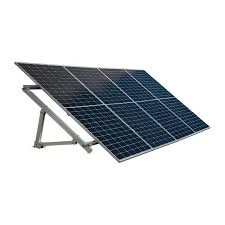Understanding the Hybrid Inverter Connection Diagram for Efficient Energy Management
Understanding the Hybrid Inverter Connection Diagram
In today's world, where renewable energy sources are increasingly becoming the norm, understanding the technical aspects of energy systems is crucial for both professionals and enthusiasts. Among the various components of a renewable energy system, the hybrid inverter plays a vital role. This article delves into the significance of hybrid inverters and explores their connection diagram.
What is a Hybrid Inverter?
A hybrid inverter is a sophisticated device used in solar energy systems that allows for the integration of multiple power sources, primarily solar panels, grid supply, and battery storage. Unlike traditional inverters, which only convert DC electricity from solar panels into AC electricity for home use, hybrid inverters can manage power from multiple sources and direct it to where it is needed the most, whether that be charging batteries or powering appliances directly.
Key Features of Hybrid Inverters
1. Multi-Source Management Hybrid inverters can simultaneously draw power from solar panels, the grid, and battery storage. This capability ensures efficient energy use and maximizes savings. 2. Energy Storage By pairing with battery storage systems, hybrid inverters allow homeowners to store excess solar energy for later use. This becomes particularly useful during cloudy days or at night when solar generation is not possible.
3. Seamless Transition Hybrid inverters can automatically switch between the grid and battery power without interruption, ensuring that households remain powered even during outages.
4. Monitoring and Control Many hybrid inverters come equipped with smart technology that allows users to monitor energy production and consumption in real-time, providing greater control over energy management.
The Hybrid Inverter Connection Diagram
Understanding the connection diagram for a hybrid inverter can demystify how these systems operate. The diagram typically illustrates the different components and their interconnections in a solar energy system. Here are the main elements often found in these diagrams
1. Solar Panels The photovoltaic (PV) panels convert sunlight into DC electricity. In the connection diagram, solar panels are usually depicted at the top.
2. Hybrid Inverter The heart of the system, the hybrid inverter, is connected directly to the solar panels, battery storage, and the grid. It includes various inputs and outputs for each component.
hybrid inverter connection diagram

3. Battery Storage Batteries are connected to the inverter, allowing for energy storage. This connection enables the inverter to manage charging and discharging based on energy availability and consumption needs.
4. Grid Connection The grid connection is vital for drawing power when solar generation is insufficient and for sending excess energy back to the grid when production exceeds demand.
5. Load Connections These represent the household appliances or systems that consume electricity. In the connection diagram, these loads are connected to the inverter, allowing it to supply power efficiently.
6. Control Systems Many modern hybrid inverters feature integrated control systems that optimize energy use, enhance safety, and provide user feedback.
Benefits of Using a Hybrid Inverter
The installation of a hybrid inverter enables homeowners to harness the full potential of solar energy while maintaining reliability. Here are some notable benefits
- Cost Savings By maximizing the use of self-generated solar energy, homeowners can significantly reduce their electricity bills. - Energy Independence With battery storage, homeowners are less reliant on the grid, enhancing energy independence.
- Environmentally Friendly Hybrid systems facilitate the use of renewable energy, contributing to a reduction in carbon footprint.
- Enhanced Reliability The ability to draw from multiple sources ensures a steady power supply, even during outages or fluctuations in generation.
Conclusion
Hybrid inverters represent a significant advancement in the renewable energy landscape. Understanding the connection diagram of a hybrid inverter system is crucial for optimizing installation and ensuring efficient operation. As technology continues to evolve, the integration of hybrid inverters into energy systems will undoubtedly become more prevalent, paving the way for a sustainable and efficient energy future. Whether you're a homeowner considering solar energy or a professional in the field, grasping these concepts will enhance your ability to navigate the ever-changing energy landscape.
-
String Solar Inverter: The High-Efficiency Solution for Smart Solar EnergyNewsJul.14,2025
-
Revolutionizing Rooftop Energy with the Power of the Micro Solar InverterNewsJul.14,2025
-
Power Independence with Smart Off Grid Solar Inverter SolutionsNewsJul.14,2025
-
On Grid Solar Inverter: Powering the Future with Smart Grid IntegrationNewsJul.14,2025
-
Monocrystalline Solar Panels: High-Efficiency Power for the Future of Clean EnergyNewsJul.14,2025
-
Bifacial Solar Panel: A Smarter Investment for Next-Generation Energy SystemsNewsJul.14,2025







